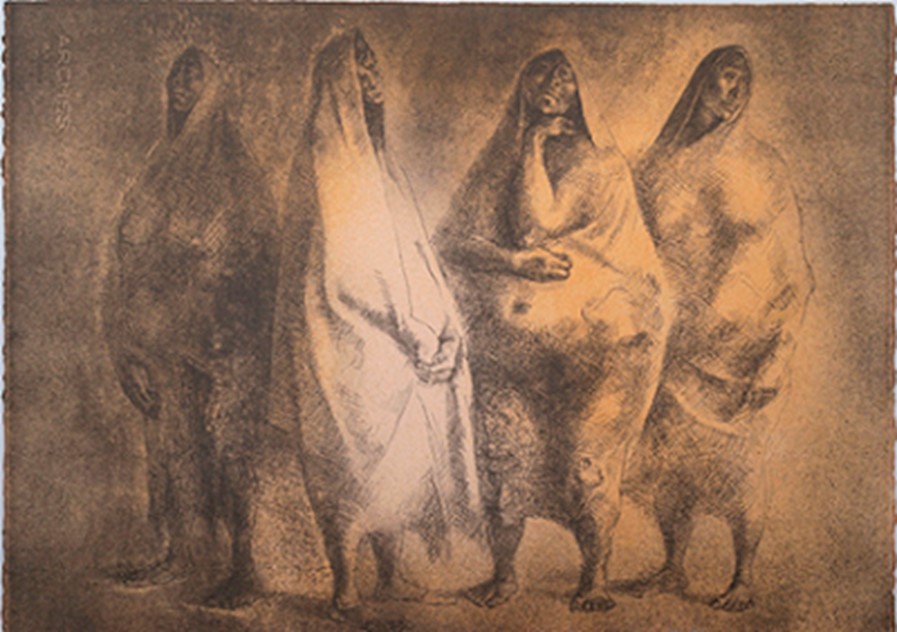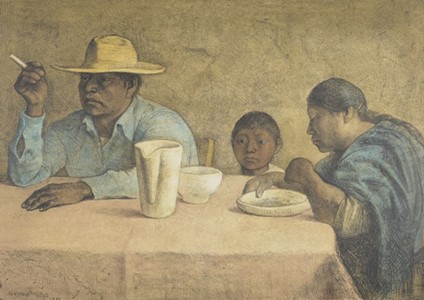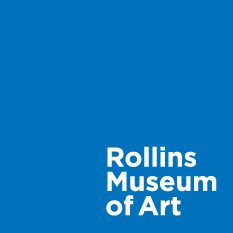Francisco Zúñiga was born in 1912 in San José, Costa Rica where his father, Manuel María Zúñiga worked as a sculptor of religious statues. At a young age Zúñiga became his father’s studio assistant and quickly learned how to work with stone and different types of wood.
In the 1930s the young artist moved to Mexico where he continued his training, eventually becoming a prolific sculptor and teacher. Best known for his representations of indigenous women, Zúñiga’s figures are characterized by an emphasis on volume and form. Rollins Museum of Art is proud to have two works by Francisco Zúñiga in our collection: Cuatro figuras (Four Figures) and La Comida.
In Cuatro figuras (Four Figures), four female figures appear against a non-descript background, each of them seen from a slightly different angle. Zúñiga’s dignified treatment of the female form celebrates the non-idealized body, and the monumentality and power of women in culture.

In Zúñiga’s La Comida, a small family sits at the table in a modest interior setting. The father and the young child look beyond their space while the mother fixes her gaze downward on the plate in front of her. The quiet scene captures the dignity of work and the importance of family, two constant themes in the artist’s work.

Cuatro figuras (Four Figures) is on view in What’s New? Recent Acquisitions at Rollins Museum of Art September 9, 2023- January 7, 2024. View a 360 degree view virtual tour of the exhibition here.

